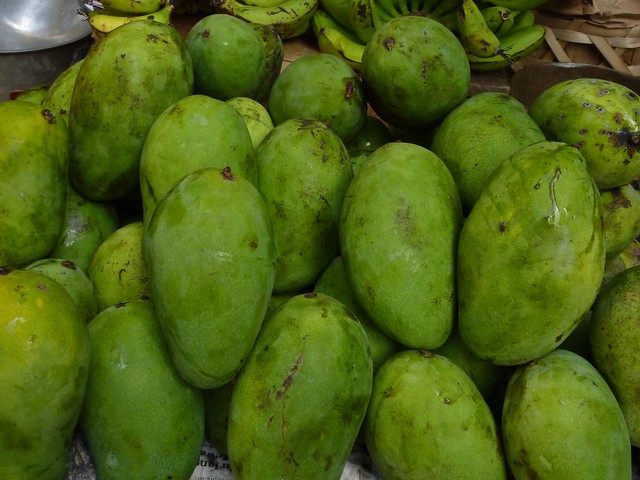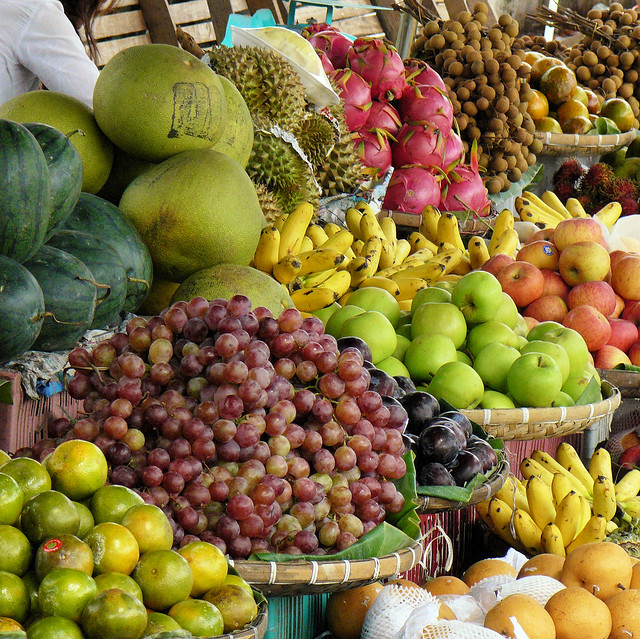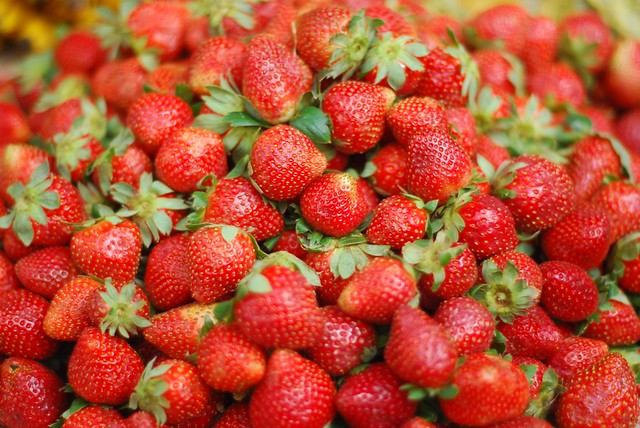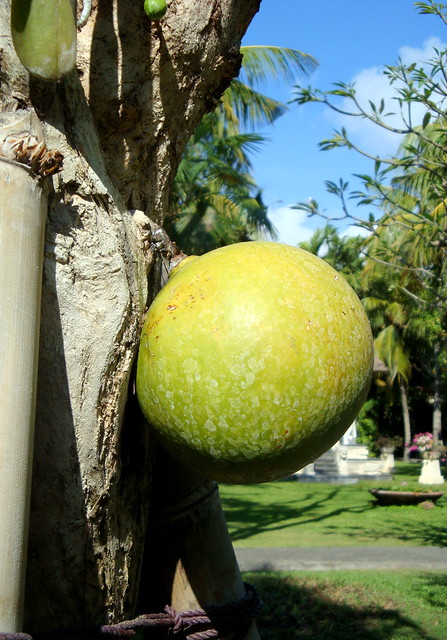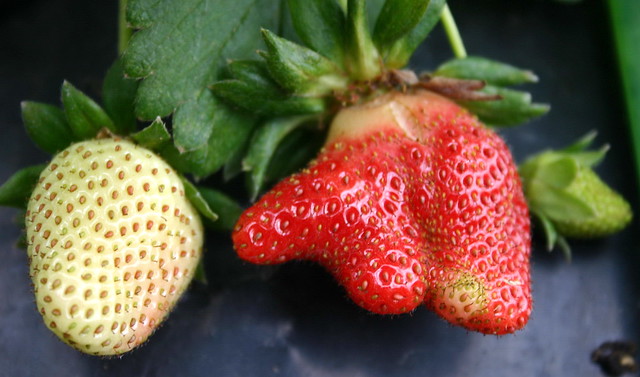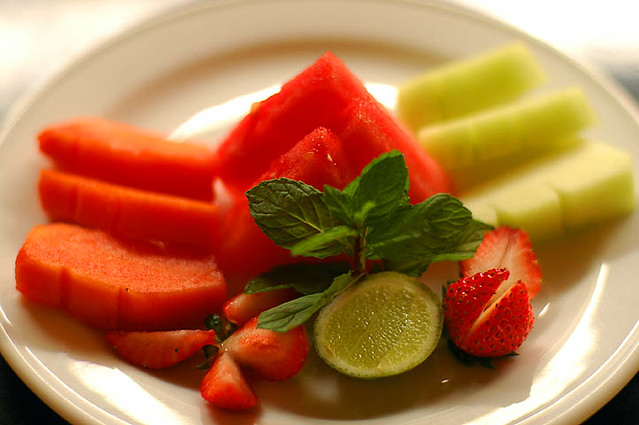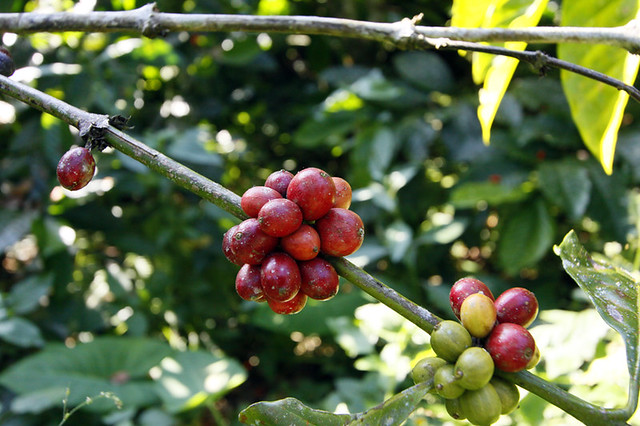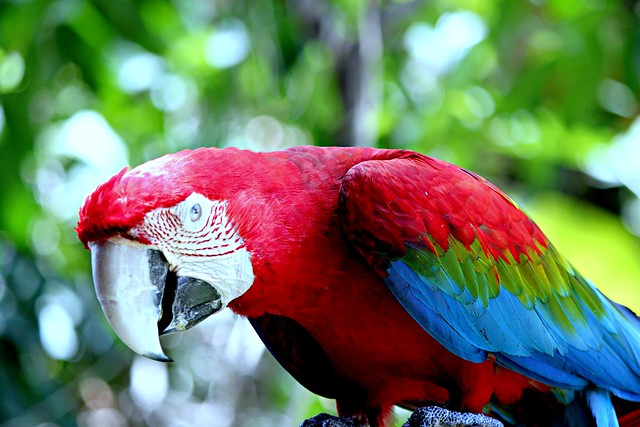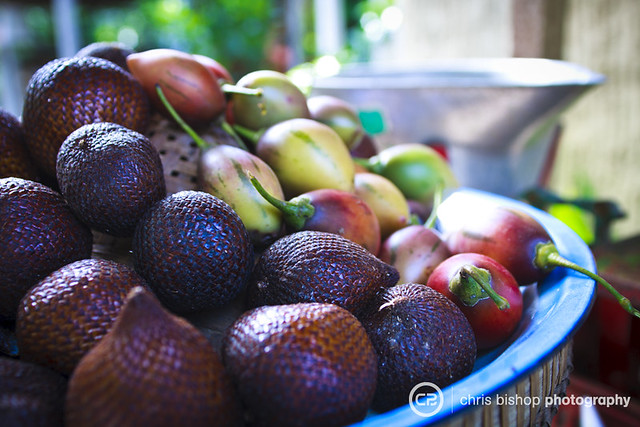With an array of colours, textures, smells and tastes, the tropical fruits of Bali are an exotic experience for the senses, and alone are reason enough to visit this stunning island. Some fruits can only be found in Bali as heavy rain, volcanic soil and fertile land offer a unique environment, while others are grown more widely throughout South East Asia. Whether you try the fruit at a resort buffet, roadside vendor, in a cocktail or through local and traditional medicine, these fruits are a must taste on anyone’s ‘to do’ list.
Durian-Duren
Known as the ‘king of fruits’, the durian is only a little bit smaller than a basketball in size, comes in shades of dark yellow or green colour when ripe, and is covered with hard spikes. However, it’s not its mace like look that has tourists and locals alike up in arms debating this fruits royal reputation. Once it is carefully cracked open and the soft, white, creamy flesh is revealed, an aroma arises that many have described as smelling like a broken toilet. The fruit is even known to have been banned from buses, hotels and aeroplanes.
For some, however, the durian has a sweet soft creamy taste a bit like custard and the smell that gets stronger as the fruit ripens is intoxicating in all the right ways.
Durians can easily be bought all throughout Bali at local grocers and roadside vendors. These vendors are more than happy to crack open the durian for you as this does require precision with a knife.
But be careful before leaving it in your room or car because the smell can remain present and entrenched in clothing for a whole week! Durian can also be used to make ice-cream and candy, with the airport even selling chocolate covered durian if your looking for a gift that is a bit easier on the nostrils.
A local favourite and definitely one for the must try list.
Mangosteen-Manggis
Grown on evergreen trees in the east and west regions of the island, mangosteen is often known as the ‘queen of fruits’. When ripe, they have a hard purple exterior with a green stalk and are about the size of an apple. This hard skin can be easily cracked open by placing the fruit between both palms and pressing gently. But tourists beware, the deep purple colour of the fruit can stain hands and clothes; hence it gets the nick name, ‘blood fruit’.
Mangosteen is easily the most popular fruit among tourists, as their white, fibrous centre is so sweet – normally one is never enough. The fruit is also used in local traditional medicine; claimed to be high in antioxidants, the rinds can be ground up and used to make a healthy tea that rid a person of headaches and some digestive problems.
Rumbutan – Buluan
Rumbutan trees grow naturally throughout all of South East Asia and can be found growing anywhere from local backyards to the jungle and in all rural areas of Bali. The name literally means hairy in Malay, which is appropriate because the fruit is covered in soft spines that give it a very hairy appearance. When ripe, the rumbutan are bright red and are easily spotted in bunches on the tops of the tropical trees, belonging to the sapindaceae family.
When eating a good rumbutan, the skin should peel easily away to reveal soft murky white flesh that is easily removed from the seed. The taste is sweet and succulent and has many tourists going back for seconds at the resort buffet. Not surprisingly, coming from the same family, rumbutan is quite similar to a lychee in taste, texture and size. However, when buying from a roadside vendor be careful of black ants that cling to the hairs of the fruit – it’s best to wash them thoroughly.
Soursop – Srikaya
If you’re suffering from mouth ulcers while you’re away and want a natural alternative to heal the pain, why not give soursop a run. This fruit is widely used in local medicine throughout the island and the leaves are even believed to help patients suffering from cancer. Coming from the same family as the pawpaw and being a cousin of the custard apple, the texture is creamy but the sour in its name does ring true.
Some describe the flavour to be a cross between a pineapple and a strawberry, while many blend the fruit with ice and sugar syrup to make a refreshing drink on a hot summers day. It is also quite common to see the fruit listed as an ingredient on cocktail menus – definitely worth a try! When ripe, soursop is green and the skin peels easily away from the fruit by hand. It is best eaten cut open and scooped out with a spoon or fork as the flesh is juicy and things can get messy.

Ripe soursop at a roadside vendor.
Salak – Snakeskin Fruit
When seen growing in a nest of thorny palm spines at the base of small palm trees, salak can look very unappealing. Even once you manage to pick one, the fruit is covered in a dark red or brownish snake scale like skin, hence the name snakeskin fruit. However, to the local or well-versed Balinese traveller – other than trying to pick one – there is nothing deadly about salak. It is a sweet and delicious offspring of the palm family, tasting a bit like pineapple with a texture closer to an apple.
The salak are very crunchy and can be peeled by hand by simply pinching the top point and pulling down. Inside the fruit is divided into three pale yellow sections, with the biggest one containing an inedible seed – something for first timers to watch out for. The fruit is grown best in the areas of Sibetan, Nongan and Batusesa village and when in season, the roughly 1 meter high palm tree can produce about 3-5 bunches of around 20 individual fruits in each bunch.
There’s no better place to eat tropical fruit than the tropics – enjoy!



 (10 votes, average: 4.70 out of 5)
(10 votes, average: 4.70 out of 5)





